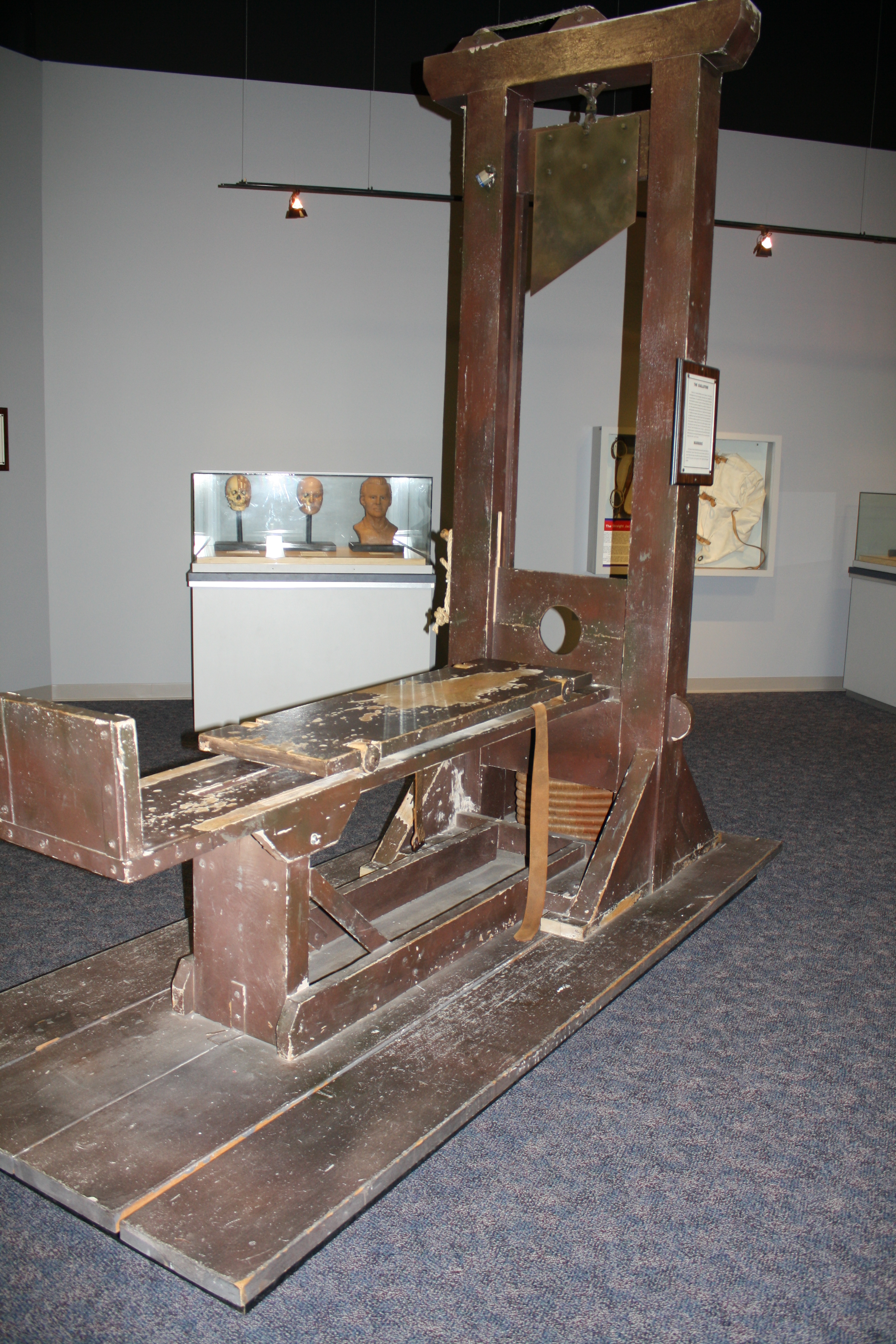

Guillotine Facts
- Total weight of a guillotine is about 1,278 lbs.
- The guillotine metal blade weighs about 88.2 lbs.
- The average guillotine post is about 14 feet high.
- The falling blade has a rate of speed of about 21 feet/second.
- The actual beheading takes 2/100 of a second
- The time for the guillotine blade to fall down to where it stops is a 70th of a second.
The Guillotine
Although Dr. Joseph Ignace Guillotin did not invent the execution machine that bears his name, he is the one that proposed its use as a standardized method of execution in France as a painless and quick form of execution that did not require great skill to carry out. A similar device known as the Halifax Gibbet had been in use in the England since 1286, more than five hundred years before the first execution by guillotine and, in Edinburgh, a version called the "Maiden" was used from the 16th to 18th centuries.
Prior to the introduction of the guillotine, only people of noble birth were executed by beheading, as it was more impractical than other current forms of execution such as hanging or burning at the stake. Beheading was considered the most humane method of execution at the time. The Greeks and the Romans considered beheading a less dishonourable and less painful form of execution than other methods in use at the time. In England, it was considered the privilege of noblemen to be beheaded.
The guillotine brought beheading to the masses - literally. No fewer than 1,225 people were executed in Paris in the 13-month period between May 1793 and June 1794. During the French Revolution practically all of the French aristocracy were executed.
Although use of the guillotine has never been a legal form of execution in the United States, it was widely used in Europe and Asia and is still used in some Mid-Eastern countries. Prior to Utah becoming a state a condemned person was allowed to choose beheading as a means of execution. No person chose that option, and it was dropped when Utah became a state.